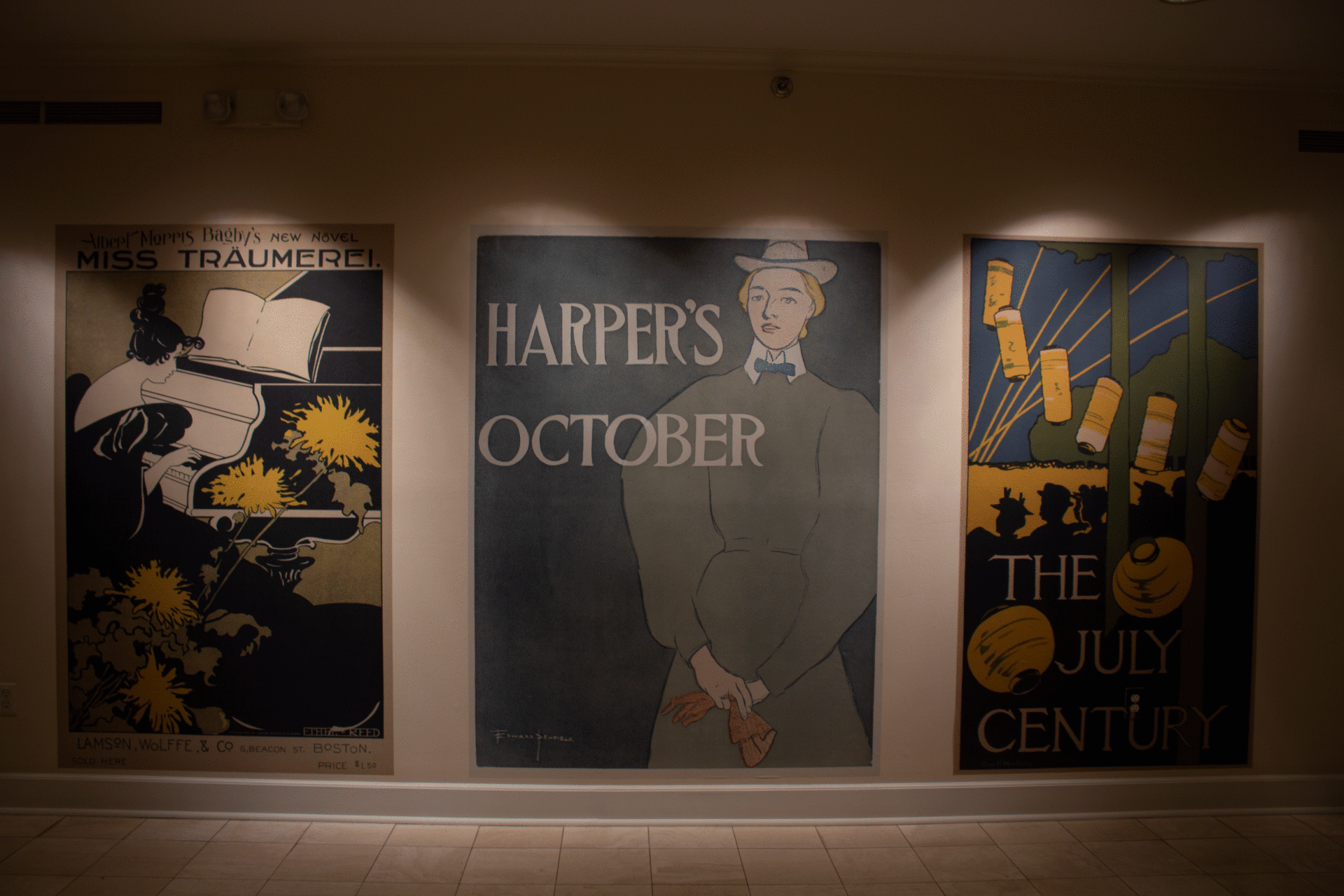
During the 1890s, America went through “poster mania” or a surge of poster-production that advertised magazines, newspapers and books. The Portland Art Museum (PAM) will be hosting “The Art of Reading,” an exhibition to showcase America’s early poster movement until June 2020. It explores how advertising posters gained artistic value and became more recognizable than the actual products they advertised.
“Poster mania” can be traced to a New York publishing firm, Harper & Brothers (1833-1962), which created a monthly poster in order to boost sales of Harper’s Magazine. In 1893, the company first hired Edward Penfield who, after demonstrating remarkable success with his posters for Harper’s Magazine, set the tone and style for his contemporaries throughout this short-lived but vibrant decade of poster art.
Penfield’s posters were strikingly vivid in color, yet the design and subject matter remained simple. He restrained from using modeling, the articulation of forms through the contrast between light and dark, in his pieces; instead employing simple lines and basic shapes to suggest form. Piercing colors are poured onto these posters without any acknowledgment of shadows. The captivating colors and style precede, in some ways, the coming Pop Art movement of the 1950s. These posters also typically focused on upper-class men and women in leisurely, relaxed positions. Magazines were not yet marketed to the entire public and focused on a wealthier romanticized genteel class.
While posters were incredibly important for the advertisement of newspapers and magazines, book sales declined as a result of the poster boom. Due to little coordination between poster and book cover designers, the general public started to seek the posters out because they were more visually appealing than the product that was sold. For this reason, publishers stopped spending money and time on advertising and put it into book cover designs. The bittersweet end of the poster mania came about when major publishing firms went out of business because consumers were more focused on the advertisements than the product.
The majority of the pieces in “The Art of Reading” come from magazine and newspaper posters. While magazines only needed to worry about producing one poster per month, newspapers were constantly churning out content. To combat this, newspapers used handbills and smaller posters with sensationalized headlines to boost the sales of their Sunday editions. As magazines typically only displayed the name and month on their posters, newspapers quickly diverged and made busier posters to compensate.
“The Art of Reading” is a small exhibition and attendees can expect to spend as little as 20 minutes if they are simply browsing. The entire exhibition occupies a single room and has 48 pieces on display. However, the size of this exhibition does not demonstrate the importance of these pieces in relation to art history. According to PAM, there were more than six thousand collectors of these types of posters during its decade.
It is understandable why “The Art of Reading” will be staying for seven more months. It is not only a beautiful exhibition but a historically rich one as well. It is worth taking at least the 20 minutes to browse, but, hopefully, you will be inclined to stay longer.
Subscribe to the Mossy Log Newsletter
Stay up to date with the goings-on at Lewis & Clark! Get the top stories or your favorite section delivered to your inbox whenever we release a new issue.

Leave a Reply